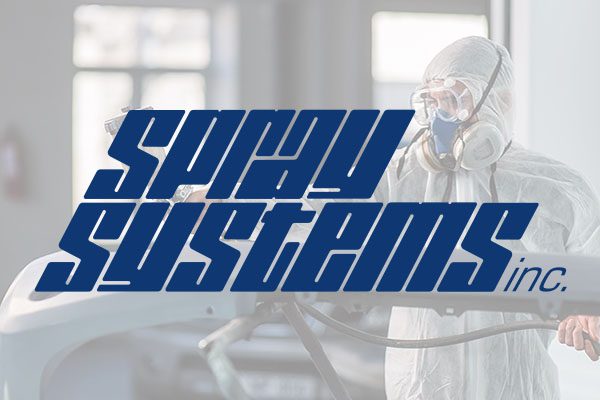When industrial manufacturers consider installing a paint booth in their facility, there are a number of considerations to be careful about and resolve. To be compliant with environmental regulations, most industries need to reduce the amount of air pollutants, or VOCs (volatile organic compounds), released from solvents that are in paint. Paint booths provide a clean and controlled environment for finishing, at the same time removes any paint overspray from the air using exhaust filters. The results are clean air in an enclosed, protected painting area with particulate-free air exhausted from the booth area.
To accomplish this, paint booths intake air from outside the facility and either push and/or pull the air through the paint booth. In a crossdraft booth, the air enters and exits horizontally, parallel to the floor. In a downdraft booth, the air enters from the ceiling of the booth and exits through grating in the floor. Both airflow designs have benefits and disadvantages. To select the most appropriate paint booth, we recommend evaluating the following:
- Desired paint quality
- Installation limitations
- Product size
- Operational cost
Desired Paint Quality
For high-quality finishes, many manufacturers choose downdraft booths. The downdraft airflow pushes excess paint toward the floor and away from the part. In contrast, for longer parts, crossdraft booths can force the overspray along the part, thus creating “dry spray” and not providing the optimal finish. The flow of air across the product may also result in unpainted areas being covered as the paint travels. If this is an issue where a high-quality paint job is required, downdraft booths are a better solution.
Free eBook: Are you ready for a new spray booth?
Part Size Determines Airflow Requirements
The part size has a large effect on the amount of air that the paint booth needs to intake in order to generate airflow. For example, a manufacturer has a part that is 20 feet long 2 feet wide and 2 feet tall.The appropriate paint booth dimensions for a part this size would need to be 8 feet wide, by 8 feet high, by 30 feet long to allow room to apply furnishings, responsibly.
The CFM (“cubic feet per minute”) value of a crossdraft booth design is calculated by taking the cross section of the booth times 100FPM (“feet per minute”). In this example: 8’ x 8’ x 100 FPM = 6400CFM, which is required by code. However, the CFM calculation for a downdraft version with the same booth dimensions, will be calculated by the horizontal cross section times 100 FPM. In this example: 30’ x 8’ x 100 = 24000CFM, which is required by code. As you can see, there is more volume of air needed for a downdraft booth versus a crossdraft booth to produce the required finishing results.
Operational Cost
Providing fresh intake air through a paint booth is an energy intensive process. Fans pull fresh air into the booth from outside, then heats and filters the air as it enters the booth. The amount of energy required for this process is directly related to CFM required from the booth’s air flow design. In the previous example, for the crossdraft booth example above the supply air required was 6400CFM. And the downdraft design required 24,000CFM. Based on these examples, the downdraft booth will require approximately 75% more air to operate effectively, illustrating that the part dictates the operational design solution for the booth. This requires that you to take into account the air flow option and its requirements into your budget.
Installation Limitations
In some cases, it can be difficult to install a downdraft booth. Most downdraft designs require that the booth is raised off of the floor or exhausts into a concrete pit. The extra space is needed for the filters that clean the exhaust air. For those that are designing a new facility, the changes to accommodate a downdraft booth can be be architecturally designed into the facility, therefore, the costs for a downdraft booth solution can be minimized. However, for those having existing facilities and cannot easily accommodate floor renovations, a crossdraft booth might be a better choice, as they can be installed without major building modifications.
Choosing the right paint booth design depends on both desired quality and facility limitations. From a pure quality perspective, a downdraft booth provides a higher quality paint job than a crossdraft booth. However, downdraft booths are more expensive to operate because they require a larger amount of intake air to function. Installing a downdraft booth can also be costly because floor renovations are required. Instead, a good choice for larger parts or those that don’t require a pristine paint finish is a crossdraft design. This airflow system is less expensive to operate and easier to install.
Spray Systems provides paint booths that efficiently provide high quality, safe solutions for your workers, facilities and environment, all while giving a pristine finish. We work with you to design the perfect paint booth for your particular parts and products, no matter what finish they require. Contact us to learn more today!
